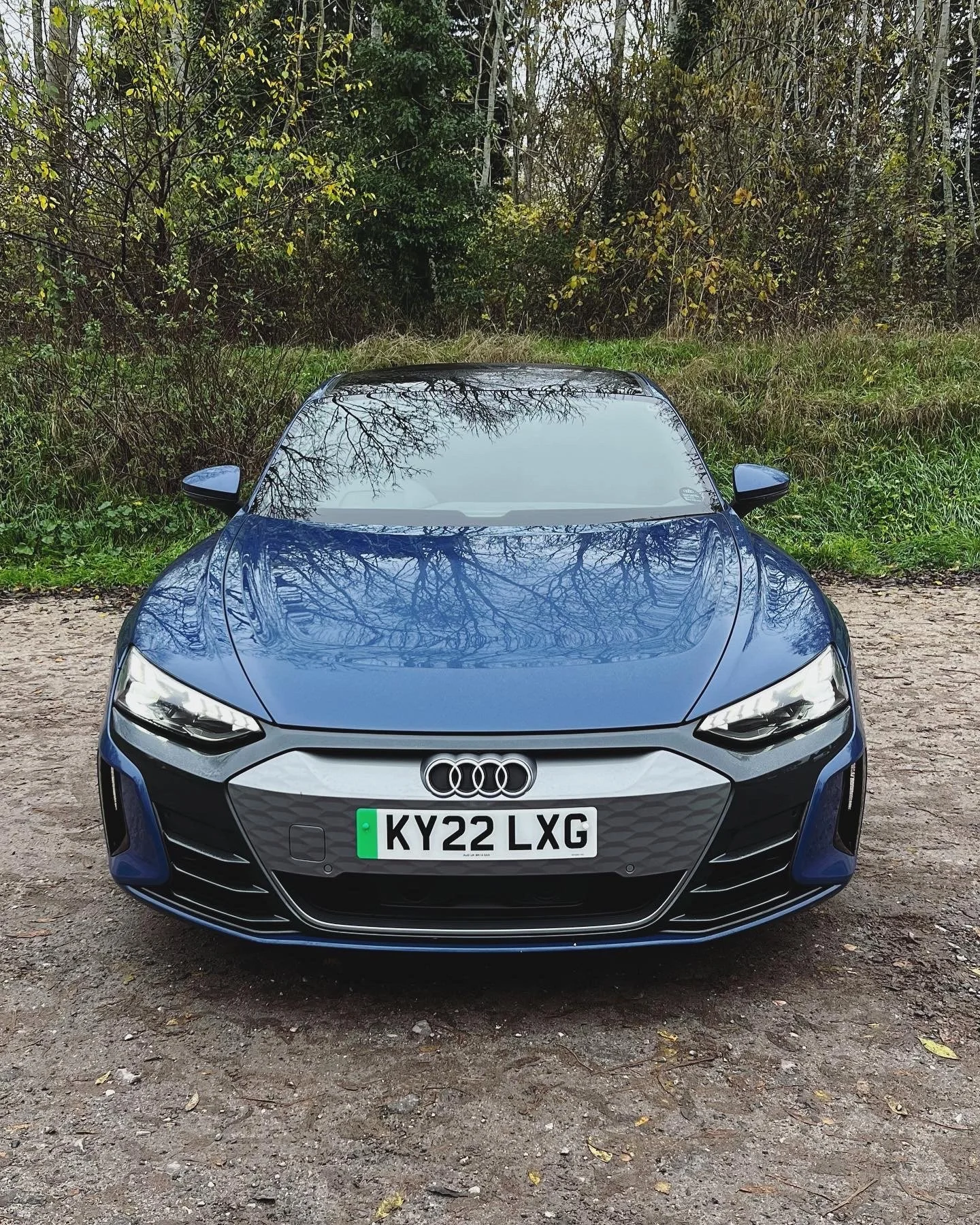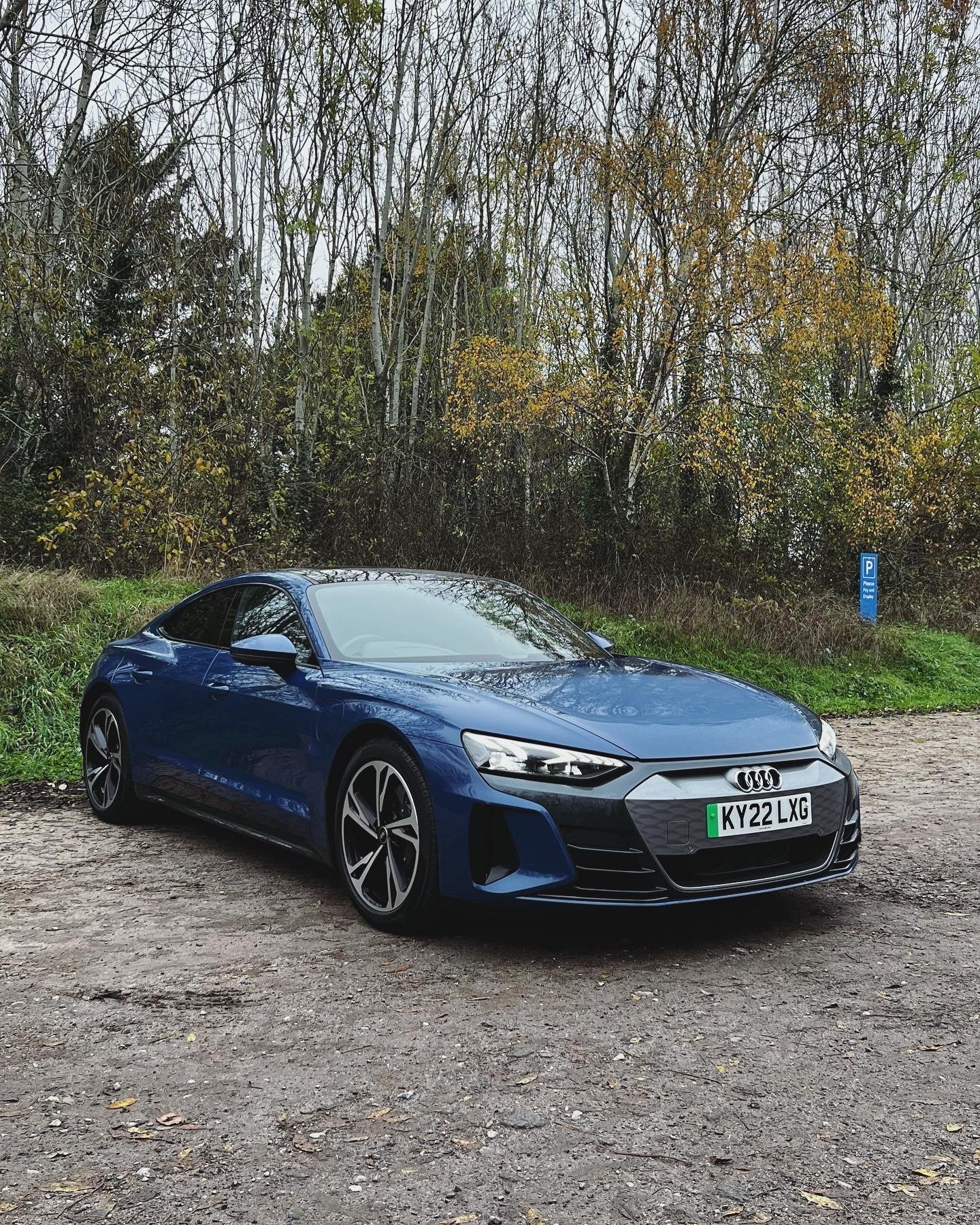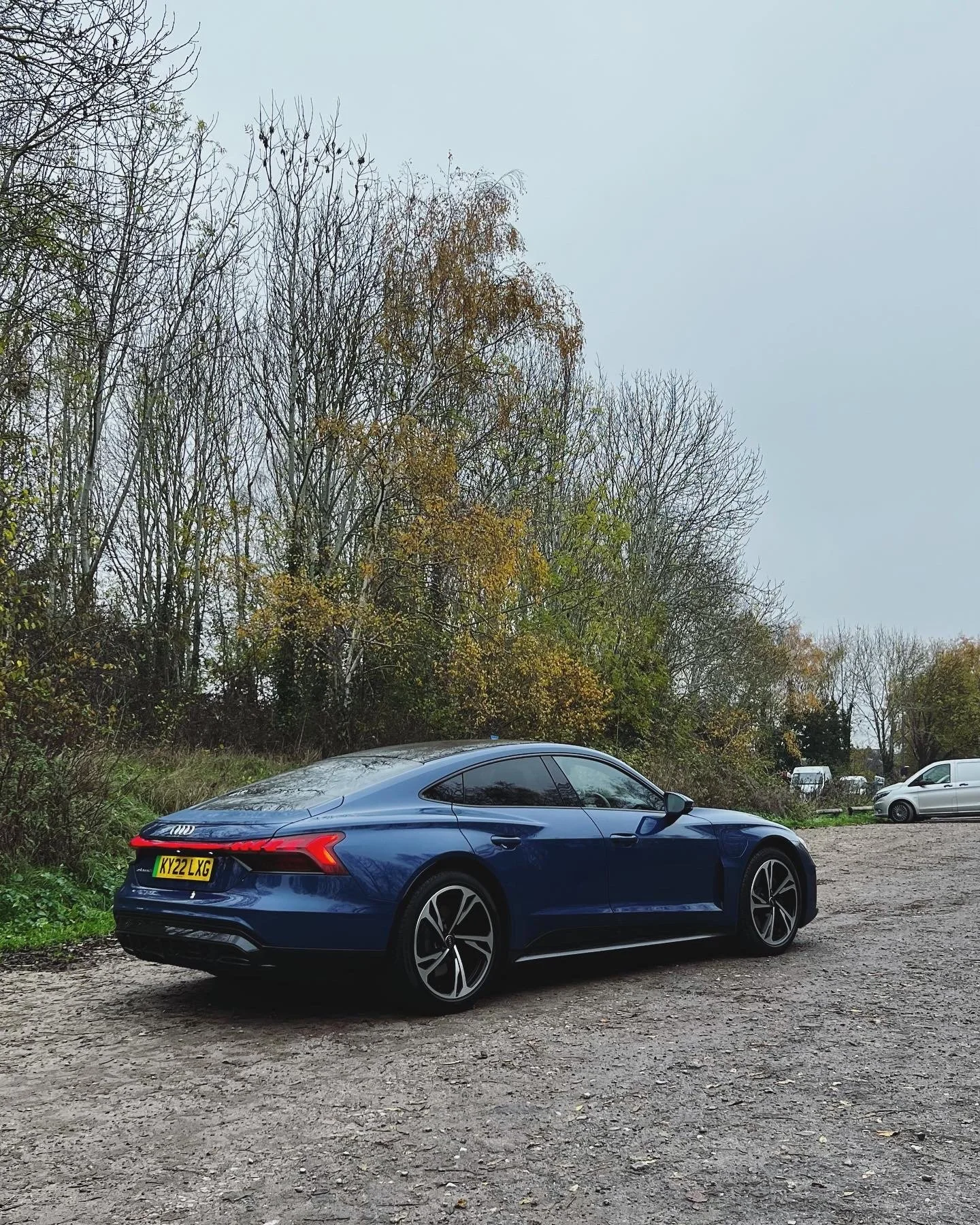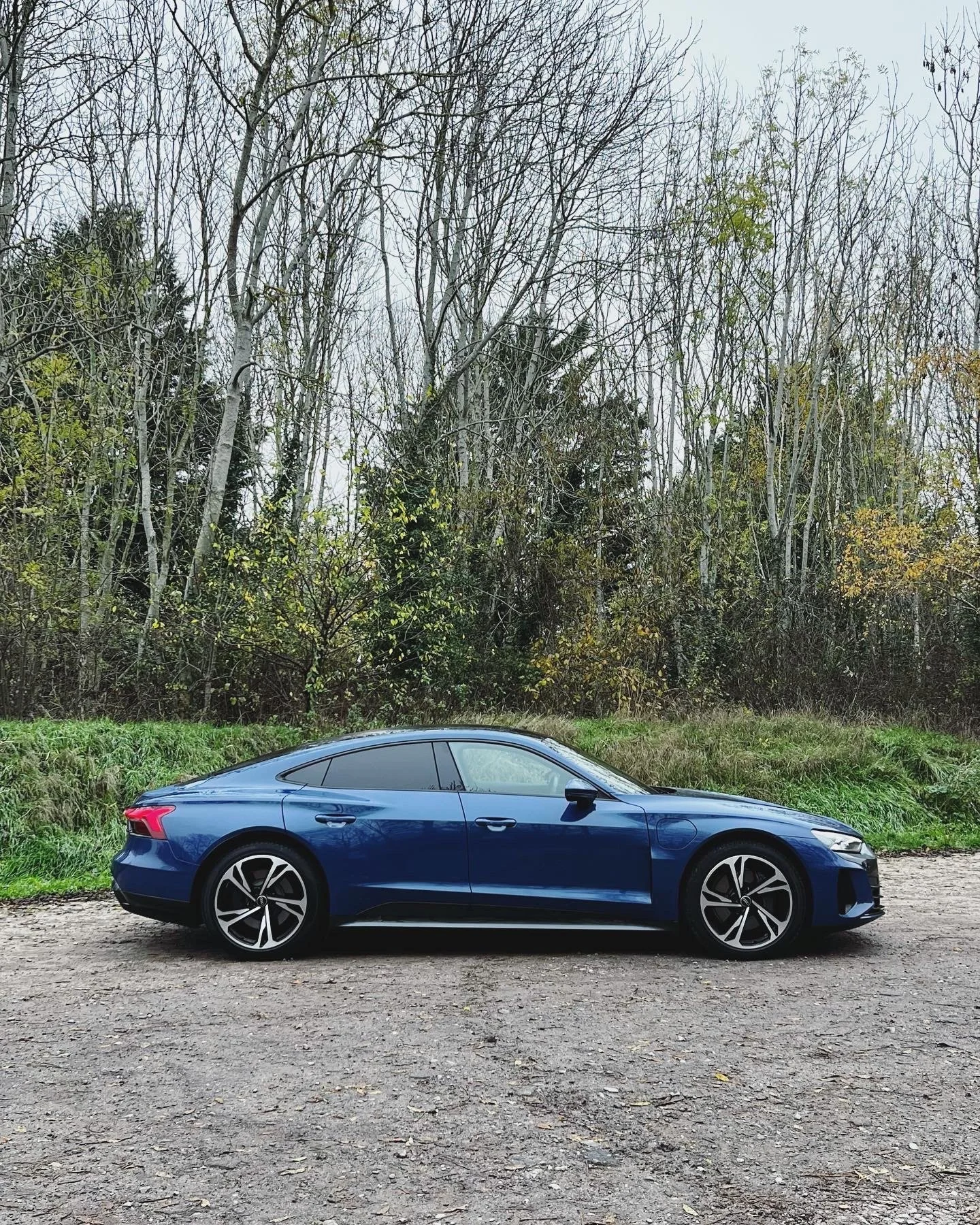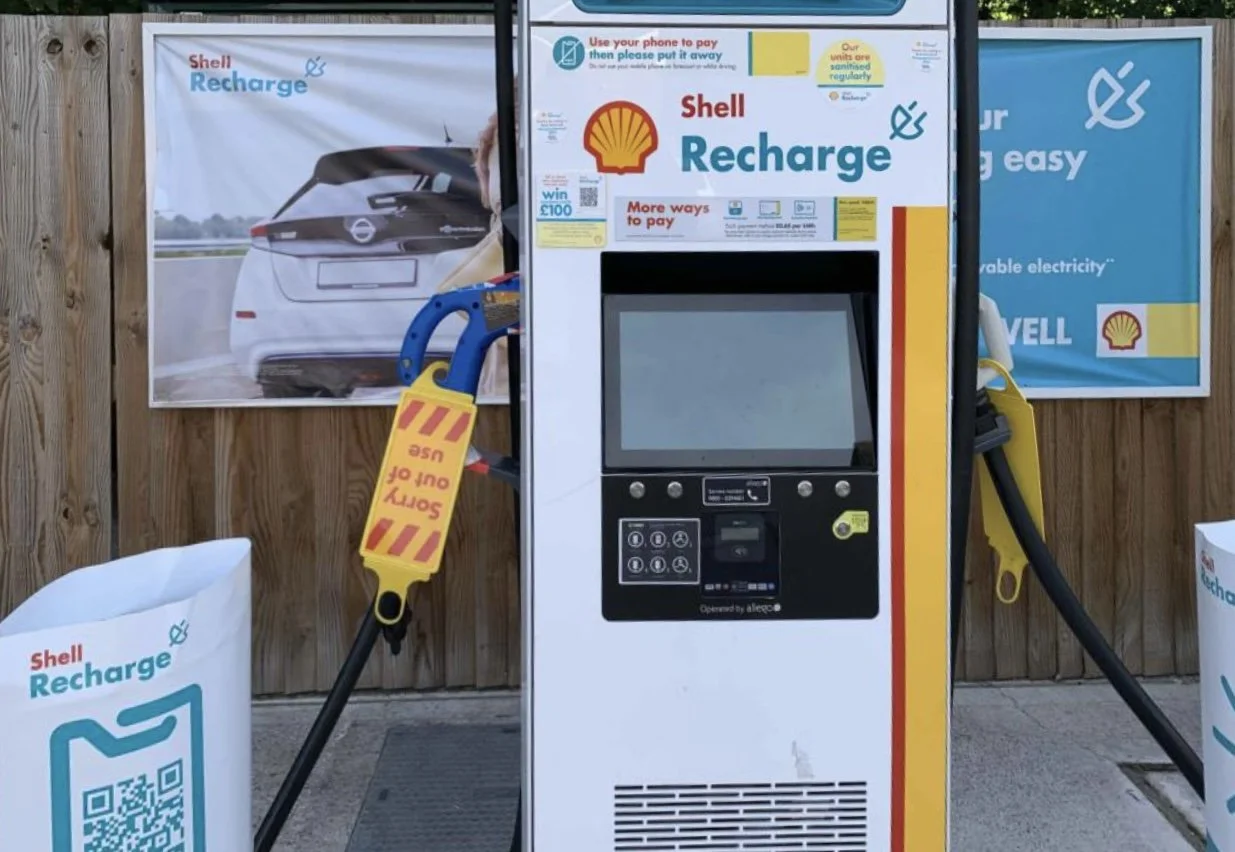Review | Audi e-tron GT | The best EV we’ve driven, but…
My latest press car delivery is Audi's take on the premium EV car market, and I have been looking forward to this one for a few weeks. The Audi e-tron GT Quattro has a lot to get excited about; it's spacious, highly practical, looks great, and, best of all, is shaped like a car - and a very good-looking car, at that.
Before taking delivery of the e-tron GT, I knew I was going to be impressed. After all, it's Audi and Porsche's shared J1 platform, which Porsche uses for the Taycan. In contrast to the brilliance of Audi's flagship EV, though, after just seven days of driving, without a charge point at home, I discovered just how tumultuous the public EV charging infrastructure is. And the more I investigated, the worse things got.
I'm willing to claim that I think the e-tron GT is THE best-looking EV on the market right now, and the designers, Parys Cybulski and Markus Däsch, have also stated that the e-tron is their best work to date. From every angle, the e-tron GT looks superb. All the proportions are balanced, with proud and prominent lines exactly where they deserve to be, and the wheel arches are haunched, giving the car a broader and more aggressive stance. The front of the car complements recent Audi design yet is bold enough to push boundaries with a bulging front grille and side vents directing airflow around the wheels. The e-tron GT offers ample storage with a 405-litre boot at the rear and 85 litres under the bonnet.
Car design is currently in a transformative chapter, but everything about this e-tron seems correct - the perfect blend of familiarity, formality and function. The car is perfectly symmetrical too, with a charging port on either side, allowing for multiple charging options.
The positive design theme continues on the inside, making for a very pleasant place to be as a driver or passenger. It all feels reassuringly familiar without any apparent need to fill the space with quirky gadgets or features. Rear legroom is ample, as is storage, and providing you're no taller than 6'5, accessibility is excellent too. My only concern with the interior design is that it is perhaps a little too safe, which may result in it ageing badly compared to some of its competitors.
There are a couple of ergonomic faults with the interior, namely, nowhere to rest your left arm other than far back on the armrest - (which means you're not holding the steering wheel). It could also do with a quick and easy switch to adjust the screen brightness. Dimming the very bright dash interface at night requires delving into multiple pages on the menu settings for what should be a quick and easy fix.
My e-tron GT was entry-level specification but still has a significant price tag of £85,000 and as you would expect, adding optional extras soon pushes that price quickly towards six figures. I had a play with the Audi configurator and found that a choice of extras I'd be opting for, such as the upgraded comfort and sound pack, adaptive cruise control and extended leather, very quickly pushed the overall price up by an additional £11,200.
There are a couple of specification options to choose from when buying the e-tron GT;
The e-tron GT Quattro (as tested) | Priced from £84,950 to £118,200 (with optional extras and extended warranty) | 530ps (522bhp) | 640Nm of torque | 0-62mph sprint in 4.1 seconds | single-charge range of up to 298 miles.
The RS e-tron GT | Priced from £115,950 to £149,075 (with optional extras and extended warranty) | 646ps (637bhp) | 830Nm of torque | 0-62 sprint in 3.3 seconds | single-charge range of up to 285 miles.
Audi has been very clever with its electric motors, regenerative braking and power distribution, which gives the car a considerably lighter feel than some of its competitors, including the BMW i4 M50 I tested earlier in the year (both cars weigh approximately 2.3 tonnes). Braking is also clever; there is a two-step feel to the pedal, with the first stage utilising regenerative braking and the second more familiar pad-to-disc feel - it's a sensation that might take some getting used to some drivers.
Audi claims that the e-tron GT Quattro should have a real-case-scenario range of up to 298 miles on a single charge. Now, that's an impressive figure, and I'll be clear, I do believe Audi; however, I'd love to explore the data on that test, including knowing how the car is driven and where, because I did not see anything close to that in my seven days of driving. I, like many others, am often sceptical of EV range claims, not because they're far-fetched but more because of the very precise way in which a car needs to be driven in order to achieve the boasted figures. Still, I'm willing to offer Audi the benefit of the doubt, and I am confident that I might have seen the claimed range with a little more time and testing.
The e-tron GT Quattro sits at the high end of the EV market and is priced accordingly. It's the best EV I've driven to date, thanks to the practicalities, familiarity, styling and performance. In my seven days with the car, aside from a couple of ergonomic niggles it's been difficult to find many faults. Sadly the same could not be said for the public infrastructure I depended on for charging it...
It's worth noting that I took delivery of the GT in an unusually cold early December, and it's perhaps no secret that cold weather does hurt battery life in anything from our mobile phones to our £100,000 EVs. I had no plans in my seven days with the car to conduct a precise range test; however, I did have a couple of significant journeys that should have been a breeze for the claimed range. One such journey included a drive from my home in Warwickshire to South London and back again - a total round trip of 240 miles - a breeze for the E-Tron GT's near-300-mile range, surely? No, not quite.
I started my journey from Stratford-Upon-Avon with a 94% charge in the battery and a predicted range of 212 miles. I wasn't too concerned about this as, on the previous day, I'd been filming with the car and had repeatedly been testing out the impressive 0-62mph 4.1-second launch. Like in a petrol or diesel car, the onboard computer's short-term memory predicts the likelihood of continued spirited driving and reduces the predicted range accordingly. I remember thinking all would be fine, as shortly, I'd be driving in efficiency mode at a steady and consistent 70mph on the motorway allowing the car's computers to realise I was no longer being a maniac and, therefore, would reward me with some additional miles of range; except - it didn't. Not at all.
Regardless of what I tried, driving at 60mph, turning off my heated seat, and putting the A/C in ECO mode, I could not get the car's range to increase. The cold weather had taken its toll. I completed my drive to London, and my range from the battery was 15 miles short of my journey home. Perhaps unsurprisingly, I wasn't prepared to risk gambling an increased EV range on the drive home, especially given that it was considerably colder and now raining. It is December, after all.
Thirty miles into my journey home, I decided to visit the rapid charging stations at Beaconsfield Services. I'd used one of these charging points a few days previously, which had rewarded me with 140 miles in just 20 minutes. In theory, this would be ideal; adding 25 minutes or so to my 2-hour journey is acceptable in return for enough range to get me home and onward to the office the following morning - or so I thought. I arrived at Beaconsfield around 6 pm to find every charging point occupied and no less than nine other EVs queuing for a turn to plug in.
Queuing for an EV slot isn't like queuing for a petrol or diesel pump, as the spaces are just car parking spaces. The waiting system is comparable to that of a barbershop. People turn up, glance left and right to make a mental note of the order in which people are waiting, and wait their turn. In person, in a barber shop, that's not too complicated. But in a busy car park with some people waiting eight or nine parking spaces away, blocked and shielded by other parked cars, it is, in a word, painful. Following some borderline passive-aggressive chat with just enough polite chuckling, shrugging, and eye-roll-sigh combinations to maintain sanity, I decided it was time to go elsewhere and stop at the next northbound service station within range, Oxford.
I arrive at Oxford with 17 miles left on my range and 54 miles remaining on my journey home. Now, here's a fact I wish I had known before driving my EV to Oxford services: there are 16 charging points at Oxford services which is fantastic! - If you drive a Tesla. If you don't drive a Tesla, then you're relying on the two (yes, two) charge points for other brands. And guess what? Yep, both of the charging points for other brands are out of service, with a small gathering of EV owners standing around them in confused disbelief, shrugging and rolling their eyes like they're partaking in a strange EV driver's dance ritual. So, what next? It's time to pull out the saviour to all EV drivers - the mobile app, Zap-Map.
Zap-Map is a mobile app showing pinpoint locations of charging points all over the country. A perfect tool for journey planning or finding a quick solution to getting a charge at short notice. Zap-Map showed that my nearest available charge point is in the town of Thame; it's 6.2 miles in the wrong direction, but not to worry, once there, I can utilise the 120kW fast charger and get back on track to get home. Zap-Map also shows when charge points are available and in working order, which this one in Thame was... Right up to the point of pulling into the car park. As I arrive, there's a nice chap plugging in his car, you guessed it, for a full 2-hour charge. Other charge points are available at the car park, but they're 5kW chargers that would take many hours to grant me even half the mileage I need to get home. At this point, the novelty of EVs is rapidly starting to wear off.
I'm now down to 12 miles range and rapidly running out of ideas; Zap-Map shows two 50kW chargers in the town of Aylesbury. It's a further 10 miles in the wrong direction, but I have no other option. I arrived at Aylesbury's charging points, having nursed the throttle pedal at 7:45 pm with just 3 miles of range remaining. Whatever happens here, I need to stay and wait. Fortunately, both charge points are available and working. I plug in with the knowledge that I'll be sat for a minimum of 45 minutes - waiting for enough charge to get me home, and that's precisely what I do.
After 45 minutes of sitting 60 miles and 90 minutes from home, I can get moving again, feeling about as enthused about the idea of owning an EV as I am about contracting an incurable disease. This was just one day out of seven that I had with the car. A simple two-leg journey that, in theory, shouldn't have warranted needing to stop once. My drive home should have taken no more than 2 hours and 10 minutes, yet it took me 5 hours and 30 minutes.
But wait, there's more; the inconvenience doesn't come cheap either. I'm dependent on the public charging network without a charge point at home, and my 45-minute charge as part of my late-night excursion cost me £27.71 and rewarded me with just 87 miles. On a previous day, I'd used a 120kW fast charger to charge the battery from 20% to 95% (an additional 190 miles), which had cost £55.28.
The hard truth is: public fast chargers are not good value.
£55 worth of diesel in my 300d Mercedes rewards me with almost twice the range offered by the electric charge and half the hassle. And herein lies just part of the problem. EVs are expensive to purchase, costly to charge publicly and rely on an entirely new driving and journey-planning approach.
My other difficulty with owning an EV comes with, once again, having to rely on the charging network in my local town. I live in the bustling small town of Stratford-Upon-Avon in Warwickshire. The town prides itself on having both a remarkable history and a progressive outlook on the future, with no less than 13 EV charge points - two of which are fast chargers! You can predict what's coming next, now can't you? Yes, a but - a series of them, actually.
Out of Stratford-Upon-Avon's initially very encouraging 13 charge points;
- All but one is accessible without having to pay for parking in addition to paying for the charger.
- Only two of the 13 are fast chargers, but one is located in a busy hotel car park with some of the smallest parking spaces I've ever seen, and the other is located in a local Shell station, but in the time I've been driving EVs locally, it has never worked.
- 11 of the 13 points are slow 5-7kW chargers which are only really suitable for overnight or all-day use.
- 4 of the 8 slow points are positioned amongst short-stay or permit-holder parking spaces with signage welcoming 'all cars' to park in the charging spaces. As you would expect, this results in parking spaces being almost exclusively taken up by non-EV cars. And suppose, by some miracle, you do get a space with a charging port, the permitted parking time isn't sufficient within the restricted hours to achieve a worthy charge - rendering them almost entirely useless from the outset.
If I had a charge point at home, I'd likely be telling a different story; however, almost 25% of drivers in the UK alone do not have any access to off-street parking, which only potentially could grant home charging.
So here I am, almost at the end of my week, looking out at one of the most exciting cars I've been sent this year. And yet, so save a potential headache, with one last long round-trip to undertake, I'm considering opting for my 1990s BMW instead. Something's not quite right here.
My week demonstrates just one scenario in one typical small town, yet my frustrations are echoed in my local community and countless others across the country. Right now, without somewhere to charge at home - the hard truth is; this doesn't really work.
I feel I should make it clear at this point (despite my chosen career and interest in classic cars and motorsport) I'm not a fossil fuel-loving, electricity-bashing motorist; I genuinely see space for both mediums of propulsion and understand that EVs are a necessary step for drivers and localised emissions. But with the increasing number of EVs being sold each month, I fear the infrastructure will only continue to fall behind and fail to meet the required demand.
The transition from fossil fuel to EV was destined to be a PR challenge from the outset, but with so many now taking the unfamiliar step into EV - only to be met with the sort of challenges and costs I faced in just seven days, I fear the masses simply won't stand for it. Some surveys show that as many as 20% of EV motorists have switched back to internal combustion cars after making the original switch to electric due to the sort of frustrations I've experienced in day-to-day use.
Change is happening, and more charge points are being introduced but is it all happening quickly enough? Or is it already at the point of 'too little too late?' As I write this article (December 2022), Petrol and Diesel car drivers have been told to expect an increase of 23% on fuel duty from March 2023, placing a predicted additional 12p per litre on petrol and diesel at the pumps. This headline may drive more to switch to EVs and thus put more pressure on the failing EV infrastructure. Only time will tell if the balance is restored, and if EV ownership for drivers without a charging point at home will be sustainable and tolerable.
It'll take a little while before I can happily recommend it - even with options of driving cars as excellent as the Audi e-tron GT Quattro.
words & pictures: John Marcar
additional images: Audi UK Press
special thanks to Audi UK Press












